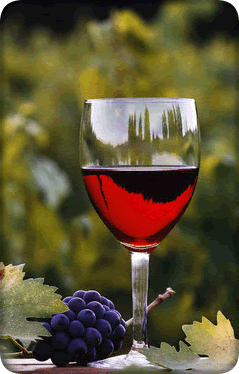Cooking with wine can add another dimension to a recipe. Enhancing flavors while accentuating textures are the main incentives for adding wines to your foods. For lots of recipes for cooking with wine, visit Wine.com.
When deciding what kind of wine to cook with, many agree that your best bet is to cook with a wine that you would drink. Remember, it is only the alcohol that diminishes during the cooking process, not the poor quality or undesirable flavor. Wines designated as "cooking wines" tend to be cheap, salty and often incorporate additional spices or herbs. Bottom line - they will do little to enhance your recipe. You do not need to spend big bucks on a wine that you intend to cook with, save that for the wine you plan on serving and drinking with the meal itself. However, if you shoot for ultra cheap you will likely be disappointed in both the flavor and the overall contribution to your recipe, consider forgoing the wine addition altogether.
Think of flavoring a recipe with wine in the same light as you would add a spice.
The flavors tend to mellow the longer you cook the wine in the dish and it is recommended that a young, strong red wine is allowed to cook for at least 45 minutes. The next question, is typically should I use a red or a white wine? Reds tend to bring color, clarity and a distinctly dry characteristic to the foods they flavor. White wines are known to bring an acidic quality with a bit of pucker power. Use reds for flavoring red sauces with red meat. For example, a bold red wine would be perfect for a meatball marina or stout stews with lots of heavy vegetables. Steer towards white wines if you are making cream sauces or emphasizing white meats or seafood.
Keep in mind that not all of the alcohol will evaporate from the cooking process. The concentration of residual alcohol that remains in your dish depends on the length of time and way in which it was cooked. For example, boiling a sauce for 25 minutes will remove considerably more alcohol than merely baking a dish for 15 minutes.
Cooking with wine should be fun. If you are just starting out, keep it simple - try a young bold red (Zinfandel, Cabernet Sauvignon, Merlot) in your Aunt Betty's family spaghetti sauce recipe or a dash of Chardonnay in your Creamy Alfredo Chicken recipe. Experiment with using wines in recipes, it is not rocket science and shaking recipes up with a splash or two of wine will likely make your favorite recipe that much better!
Matching Wines to Foods
Wine and Food Matching Principles
1. Match your wine to the strongest flavour on the plate.
2. Balance the weight of the wine to the weight of the food. A full flavoured meal needs a full-bodied wine; a lighter dish requires a lighter wine.
3. Fatty, greasy or rich dishes need a dry wine with good acidity to clean the palate.
4. Salty dishes need a slightly sweet wine with full fruit flavours, moderate acidity, lower alcohol and no tannins.
5. Hot, spicy dishes require refreshing acidity, lower alcohol and fruity wines with a touch of sweetness.
6. Cream sauces and butter require wines of good fruit and matching creamy style or contrasting acidity to cleanse the palate.
7. The wine should be sweeter than the food.
8. Rare meats need young tannic reds and well-done meats need older or fruity reds with little to no tannins.
9. Foods high in acidity are complemented by wines high in acidity.
For lots of additional information about matching food with wine, visit the Food & Wine Matching website

